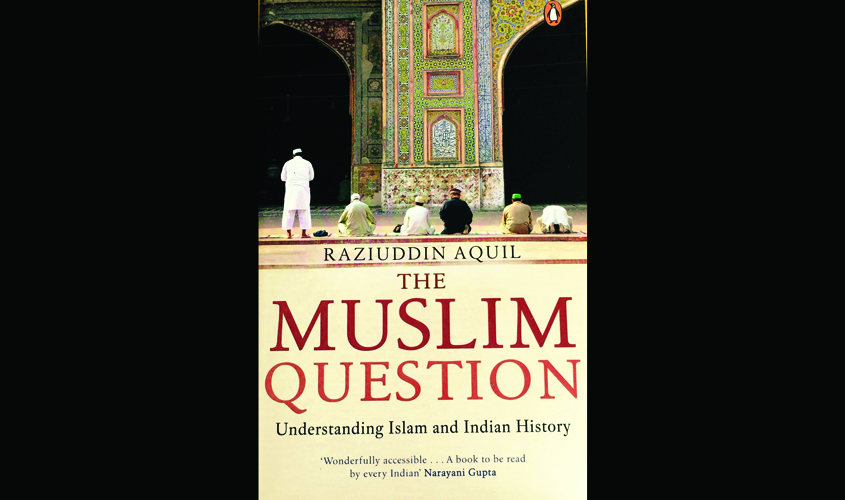 A proper appreciation of the history of Islam in the Indian subcontinent—from the early inroads made into Sindh in the eighth century to the establishment of the Delhi Sultanate in the thirteenth century, and through the middle ages up to the present day—requires detailed and dispassionate investigation. The social, economic, political, religious and cultural transformations that have taken place during this period in the region would be the subject of such a study. This means developing an understanding of not only the medieval period, which was largely under Muslim political domination, but also of the pre-Muslim or early-medieval period, as well as that of colonial rule. Importantly, this study needs to be conducted without secularism, communalism, separatism, or any other modern ideology dictating the terms and issues. In a sense, modern understandings of Muslims and of their medieval past have more to do with contemporary politics in the subcontinent, than any historical experience marked by violence and bloodshed.
A proper appreciation of the history of Islam in the Indian subcontinent—from the early inroads made into Sindh in the eighth century to the establishment of the Delhi Sultanate in the thirteenth century, and through the middle ages up to the present day—requires detailed and dispassionate investigation. The social, economic, political, religious and cultural transformations that have taken place during this period in the region would be the subject of such a study. This means developing an understanding of not only the medieval period, which was largely under Muslim political domination, but also of the pre-Muslim or early-medieval period, as well as that of colonial rule. Importantly, this study needs to be conducted without secularism, communalism, separatism, or any other modern ideology dictating the terms and issues. In a sense, modern understandings of Muslims and of their medieval past have more to do with contemporary politics in the subcontinent, than any historical experience marked by violence and bloodshed.Compared to the irruptions of the Mongols and several other accounts of political conquests during medieval times, the Turkish invasion of Hindustan and the advent of the Mughals did not result in large-scale violence and demographic dislocations. Popular notions about the general desecration of Hindu temples under Muslim rulers simply do not take into account facts about the construction and maintenance of many prominent Hindu shrines through the middle ages.
The Turks, Afghans and Mughals, amongst other sets of Muslim immigrants from Central Asia, Iran and the Middle East, were essentially urban people and wherever they settled down in the subcontinent, new cities and towns emerged. In some cases, following the change in political regimes as well as a dominant Muslim presence, a pre-existing city was renamed and transformed into a Muslim stronghold. Also, the prolonged interaction between Muslim urban centres and a predominantly Hindu rural hinterland led to the gradual diffusion of Islam in this region. As Richard Eaton has shown, the large-scale expansion of Islam in eastern Bengal must be attributed to this process of cultural accretion over centuries and not to the use of political power for forced conversion. On the other hand, huge settlements of Muslim communities on the Malabar and Coromandel coasts in southern India emerged as part of the Indian Ocean trade network. Arab, Persian and other Muslim merchants settled down in coastal towns and mixed up with the “locals” to evolve new cultural forms.
In addition, given the religious diversities and sectarian divisions amongst Muslims, a colossal, monolithic or uniform Islam backed by state power could never establish itself in the subcontinent. Instead, interactions between various strands of Islam and diverse Indic religious traditions led to the emergence of new forms of religiosity, cults and sects. Besides these, there were also a large number of “syncretic” traditions in different regions, which did not strictly conform to any organised religion in spite of political pressures on them to identify with Islam or Hinduism. Given the diversities of opinion on religious matters and occasional conflicts and tensions, rulers took positions (which in modern political parlance would be referred to as “pluralistic”) that were often not in line with the totalising rhetoric of certain Sunni Muslim quarters. Arguments were many, but violence was certainly not the order of the day.
However, despite this space that existed in medieval India for accepting difference and critiquing orthodoxy, the period did not witness the kind of strides as were made in the West during the same period. The innovations in military technology (artillery, gunpowder, cannon, cavalry), craft (metal ware, pottery, weaving), agriculture (through the introduction of the Persian wheel and new crops), food habits, clothing, etc., did bring about some transformations in the life of the people of the subcontinent, but beyond these, there was a veritable lack of initiative to turn things for the better. Enthusiastic secular historians have attributed many advances to the Mughal emperor Akbar and his intellectuals and scientists, but these seem to have been very limited.
Even as our present knowledge about medieval Indian Muslim communities and their cultural contributions remains a subject of debate, the surviving material heritage—including large numbers of exquisite paintings, grand architecture, vast literature in Persian and in vernacular languages, and complex musical and dance forms—presents a very different picture from the gory accounts of violence, rape and murder told by political groups that aim to demonise Islam and Muslims.
(Based on the author’s book, The Muslim Question: Understanding Islam and Indian History, Penguin, 2017).

